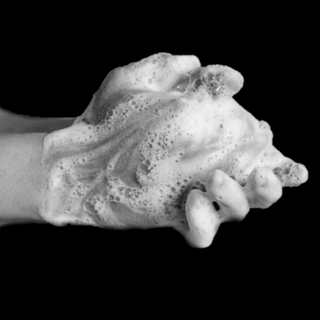
Circadian Rhythms Aren’t Just Controlling Our Sleep Cycles
This biological rhythm controlled by the brain also influences appetite, body temperature, hormone levels, and blood pressure.

The human body is pleasantly geriatric in its proclivity for routines and clocks, with the brain’s master clock controlling the rhythms in which our hearts beat, our noses breathe, and even how women’s uteri bleed. This master clock is contained within the suprachiasmatic nucleus, an area present within the brain’s hypothalamus region, controlling all our rhythms and the functions that rely on them.
Of the biological rhythms the brain controls — circadian, diurnal, ultradian and infradian — it is the circadian rhythms that control physiological cycles lasting 24 hours, like sleep and appetite. So, if you find yourself wondering if your sleep cycle has anything to do with the rest of your body feeling out of funk, here’s all you need to know about circadian rhythms and why they matter.
What are circadian rhythms?
Circadian rhythms are a biological rhythm found in most living creatures. A biological rhythm is a natural cycle of changing functions within our body. Circadian rhythms affect mental, physical and behavioral changes that occur within a 24-hour cycle. They’re also influenced by light and darkness, which informs our body’s routines.
According to research that won the 2017 Nobel Prize in medicine, a ‘period gene’ – or the gene that controls circadian rhythms, encodes for a protein that builds up at night and degrades in the daytime. Different levels of this protein in our body at a particular time help us adapt to different times of the day. In an interview with the Howard Hughes Medical Institute, Michael Rosbash, one of the winners, had said, “The circadian system has its tentacles around everything…It’s ticking away in almost every tissue in the human body. And in plants, too — including major food crops — circadian rhythms are tied to disease susceptibility, growth rate, and fruit size.”
How do circadian rhythms control bodily function?
This is dependant upon the suprachiasmatic nucleus (SCN) or the master clock. When light enters the eye, the SCN converts this information into neural signals, which then control functions such as temperature and sleep.
For example, when it comes to sleep, the SCN controls how much of the hormone melatonin is produced, as melatonin influences feeling sleepy. When there is less light, the SCN allows more production of melatonin, making us sleepy. When there’s ample light, melatonin production is reduced, keeping us awake.
Related on The Swaddle:
How Much Sleep Do You Really Need?
What disrupts circadian rhythms?
Any disruption in the body’s rhythms, such as changing a time zone, introducing artificial lights, using smartphones, laptops, and tablets after dark and working odd shifts can disrupt the body’s natural cycles and cause biological rhythm disorders like jet lag. According to the National Institute of General Medical Sciences (U.S), “Irregular rhythms have been linked to various chronic health conditions, such as sleep disorders, obesity, diabetes, depression, bipolar disorder, and seasonal affective disorder.” Other known circadian rhythm-related biological rhythm disorders are Delayed Sleep Phase Disorder(where sleep is delayed beyond a conventional bedtime) Advanced Sleep Phase Disorder (where one becomes sleepy in the early evenings and awakens early in the morning), Shift Work Disorder (insomnia and excessive sleepiness afflicting those who work the night shift), Narcolepsy (excessive sleepiness, sleep paralysis, loss of muscle control) and jet lag. — let’s either explain what these are or remove them.
Can we use an app to fix our sleep cycles?
There’s a bunch of apps out there, ranging from simple blue light filters to complex sleep/wake calculators. Blue light filters block out blue wavelengths in light emanating from smartphones, as blue wavelengths simulate daytime and thus reduce melatonin production. On the other hand, sleep calculators attempt to calculate what time to wake up, depending on the Rapid Eye Movement (REM) and non-REM sleep cycles, which are split into four stages. Waking up during REM sleep leads to further sleepiness, due to high levels of melatonin secreted during that cycle, which causes fatigue. Whereas waking up during a non-REM sleep cycle leads to a more energetic day. Another example of such apps are trackers, which help track one’s daily rhythms like eating and sleeping, and provide insights regarding the data, which one can use to improve their body’s natural rhythms.
However, while all these apps and calculators are harmless, there’s no solid science to back either blue light filters and their efficiency yet, whereas calculating sleep cycles isn’t the best idea, as not all REM/non-REM cycles are perfectly spaced apart, and not all sleep patterns are the same. So, to fix sleep routines, it’s best to put our devices far away from the bed and get some shut-eye in.
Aditi Murti is a culture writer at The Swaddle. Previously, she worked as a freelance journalist focused on gender and cities. Find her on social media @aditimurti.
Related


Forget Masks — Handwashing Slows an Epidemic More Effectively: Study
